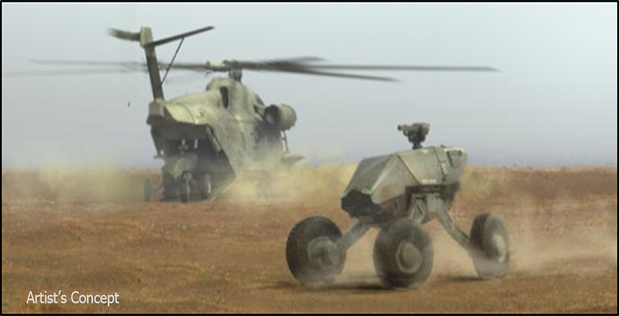US Army will make two technology demonstrators for next generation armor vehicles by 2022
by noreply@blogger.com (brian wang) from NextBigFuture.com on (#2FXQD)
2022 will be the year of decision for the Army's nascent Next Generation Combat Vehicle, officials told the Association of the US Army conference here today. That's when "at least two" NGCV demonstrators get field-tested by real troops. Those soldiers' feedback, in turn, will inform Army leaders' decision: whether to fund a full-up program to field a new armored vehicle by 2035, or put off a fresh start - again - and just keep updating 1970s designs.
Next month, the Army will begin "characterization" of how three off-the-shelf Active Protection Systems work on the M1 tank, said Col. Kevin Vanyo, program manager for emerging capabilities at TARDDEC. (That's the Army's Tank-Automotive, Research, Development, and Engineering Center). Testing on the M2 Bradley and eight-wheel-drive Stryker will start soon after. Work on all three vehicles - about a $75 million effort all told - should be done about this time next year (specifically, the second quarter of fiscal year 2018).
"We have a decision point at the end of our characterization phase (in 2018)," Vanyo said. "Do we need something now" or are we just going to sit on this and wait until MAPS is here?"
MAPS is the Modular Active Protection System, the Army's from-scratch effort to develop something more sophisticated and adaptable than the off-the-shelf APS that Vanyo is testing. A TARDEC briefer at AUSA said elements of MAPS will be tested on the Abrams and Bradley in 2018 and 2019.
By 2022, contractors will build at least two tech demonstrators - less full-up prototypes than the armored equivalent of concept cars - and have them in the hands of real soldiers for evaluation.
The US Army has previously said they want the Next Generation Combat Vehicle to serve as pack master to a swarm of crawling and flying robots. It wants lighter weapons with heavier firepower, able to aim almost straight up to shoot drones out of the sky and hit rooftop snipers. It wants miniaturized missile defenses to shoot down incoming anti-tank weapons. It wants suspension, underbody, and crew compartments designed from the ground up (literally) to resist landmines and roadside bombs. It wants diesel-electric engines - like a giant Prius - or other advanced motors that can power an array of jammers, sensors, and drone-killing lasers.

Read more










Next month, the Army will begin "characterization" of how three off-the-shelf Active Protection Systems work on the M1 tank, said Col. Kevin Vanyo, program manager for emerging capabilities at TARDDEC. (That's the Army's Tank-Automotive, Research, Development, and Engineering Center). Testing on the M2 Bradley and eight-wheel-drive Stryker will start soon after. Work on all three vehicles - about a $75 million effort all told - should be done about this time next year (specifically, the second quarter of fiscal year 2018).
"We have a decision point at the end of our characterization phase (in 2018)," Vanyo said. "Do we need something now" or are we just going to sit on this and wait until MAPS is here?"
MAPS is the Modular Active Protection System, the Army's from-scratch effort to develop something more sophisticated and adaptable than the off-the-shelf APS that Vanyo is testing. A TARDEC briefer at AUSA said elements of MAPS will be tested on the Abrams and Bradley in 2018 and 2019.
By 2022, contractors will build at least two tech demonstrators - less full-up prototypes than the armored equivalent of concept cars - and have them in the hands of real soldiers for evaluation.
The US Army has previously said they want the Next Generation Combat Vehicle to serve as pack master to a swarm of crawling and flying robots. It wants lighter weapons with heavier firepower, able to aim almost straight up to shoot drones out of the sky and hit rooftop snipers. It wants miniaturized missile defenses to shoot down incoming anti-tank weapons. It wants suspension, underbody, and crew compartments designed from the ground up (literally) to resist landmines and roadside bombs. It wants diesel-electric engines - like a giant Prius - or other advanced motors that can power an array of jammers, sensors, and drone-killing lasers.

Read more